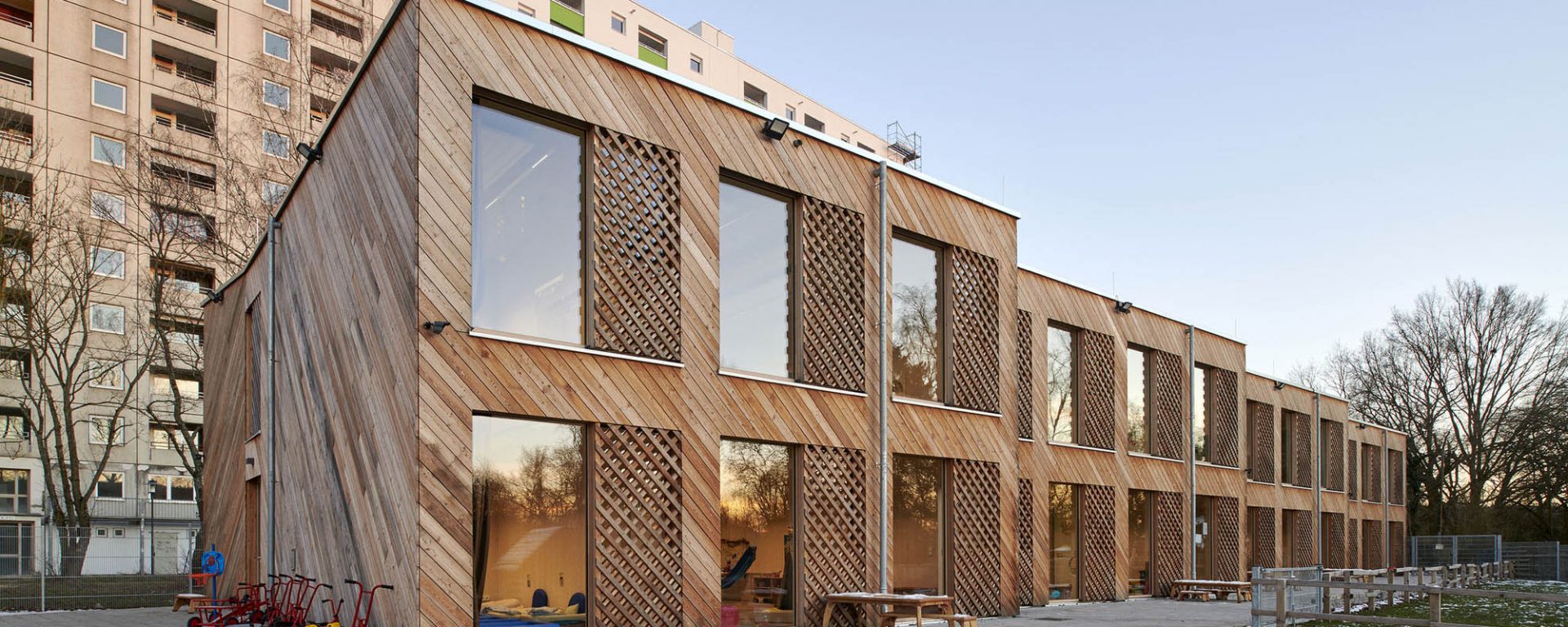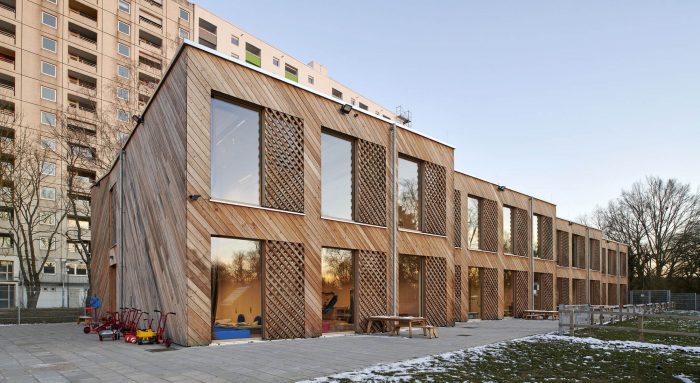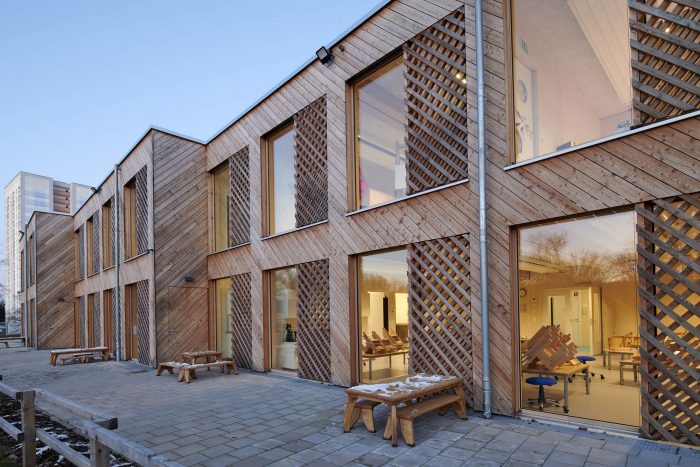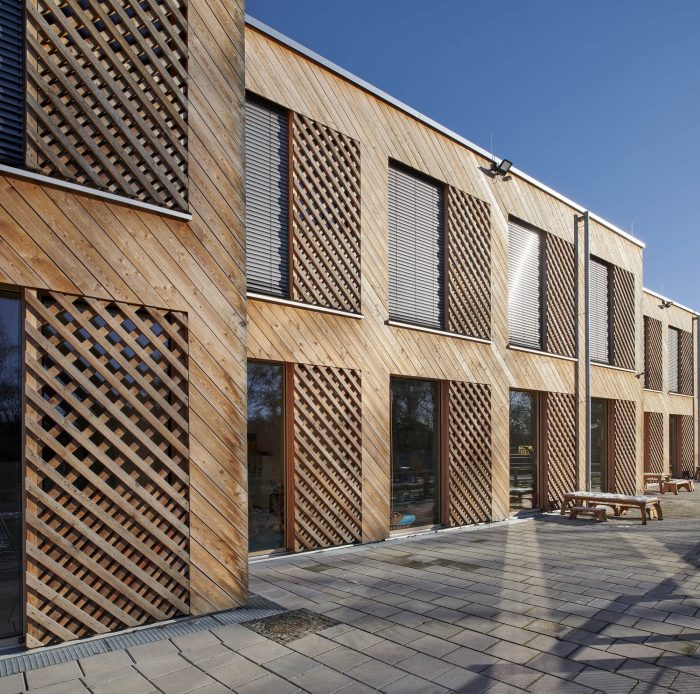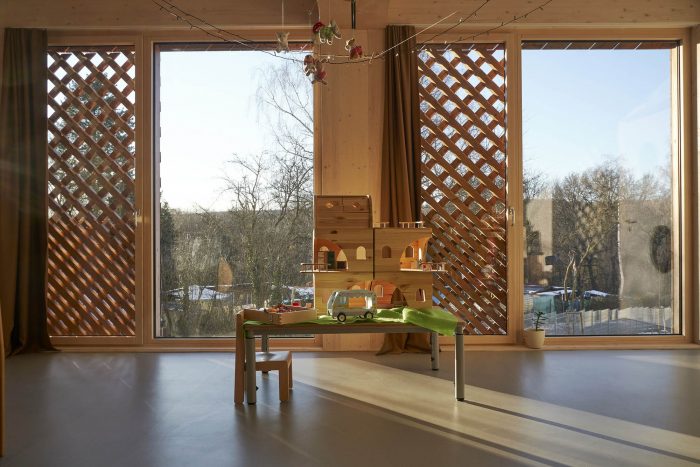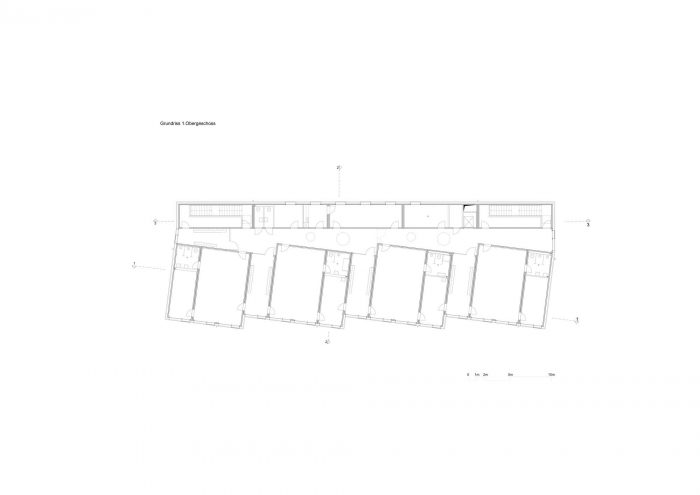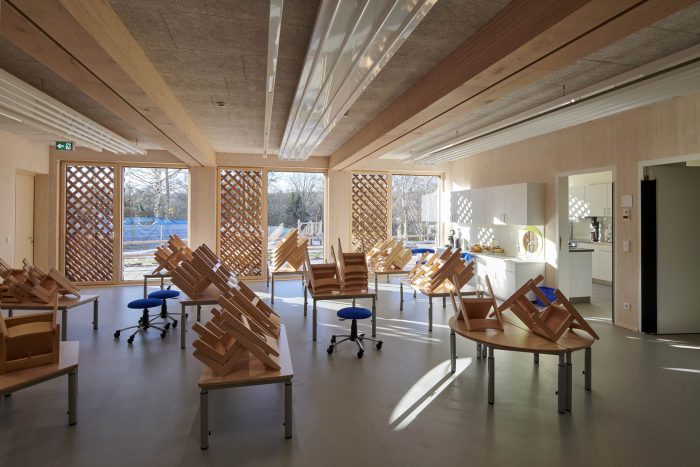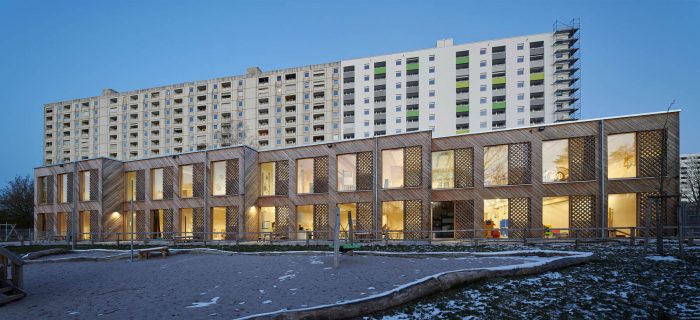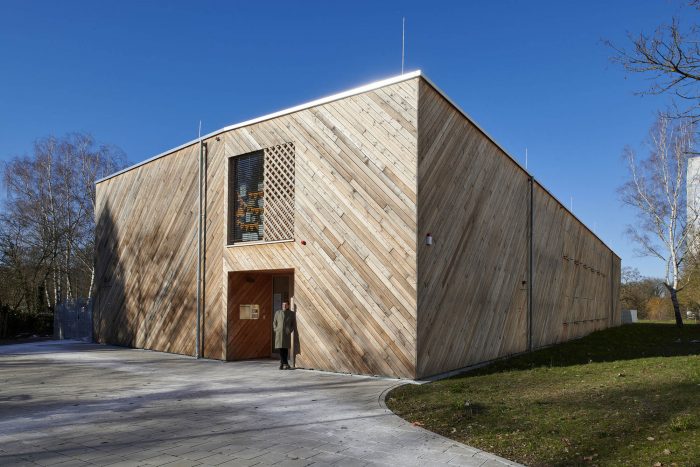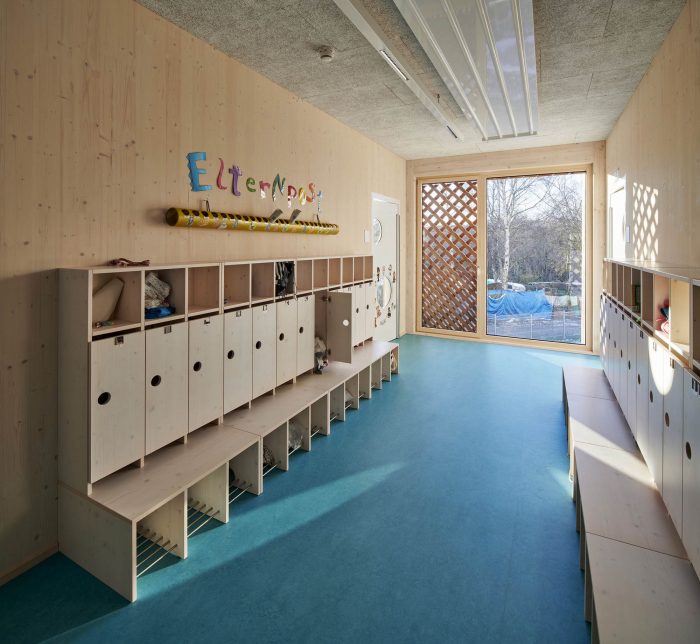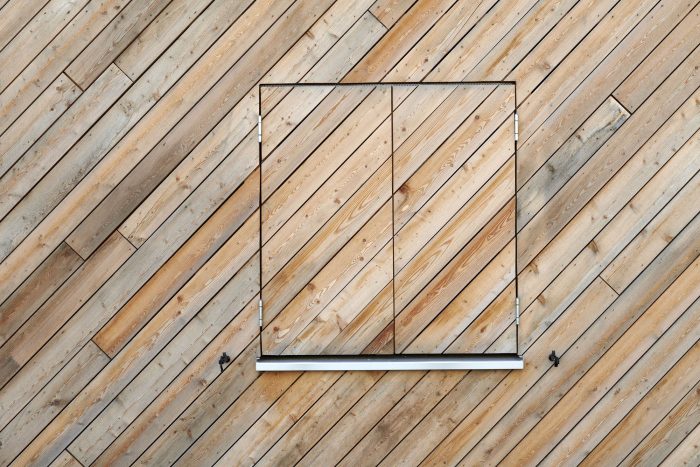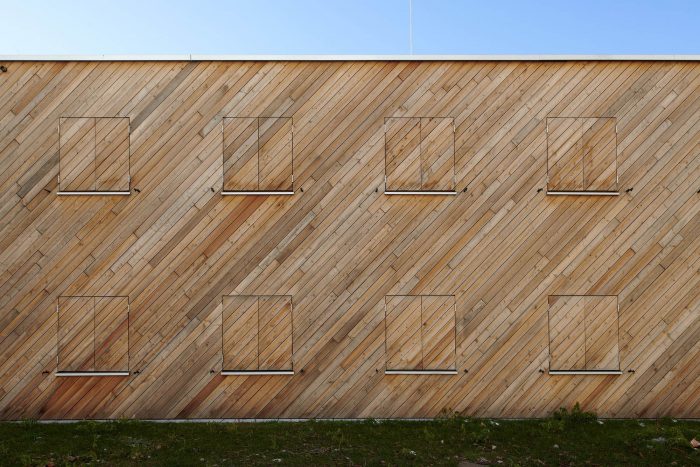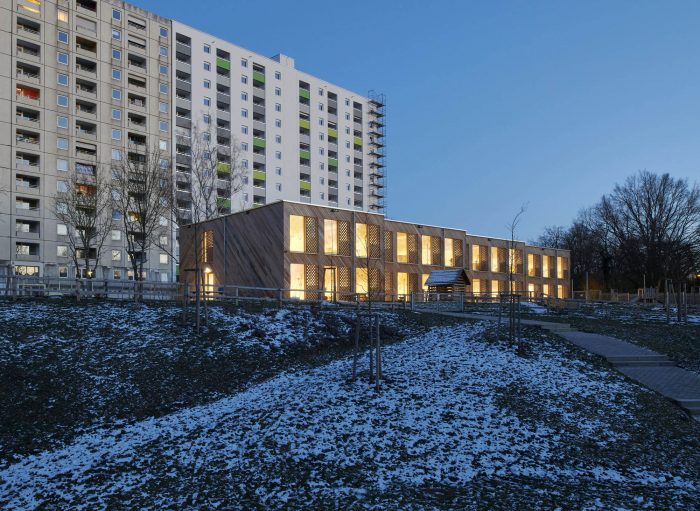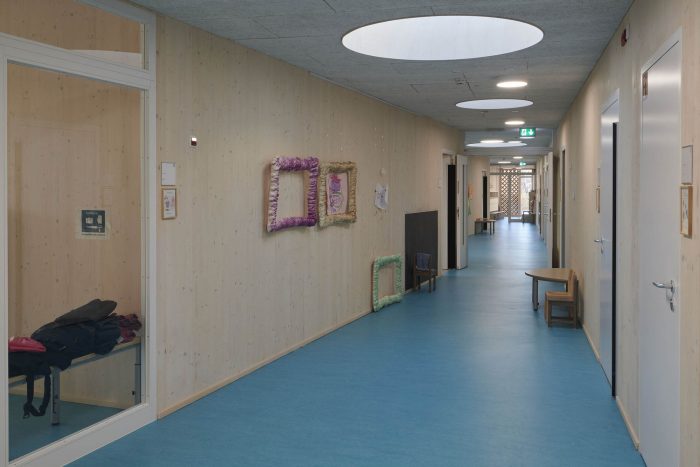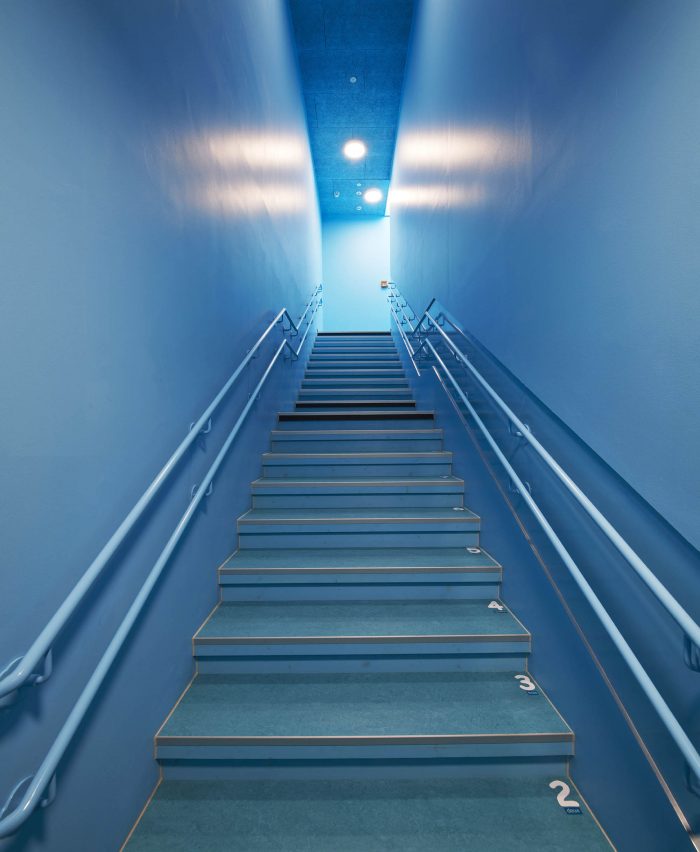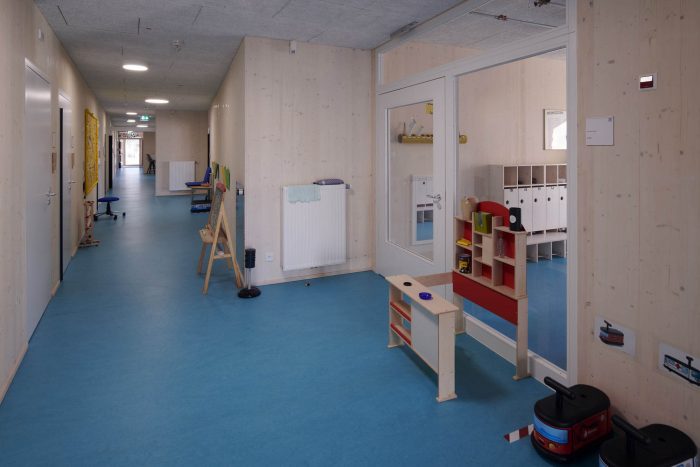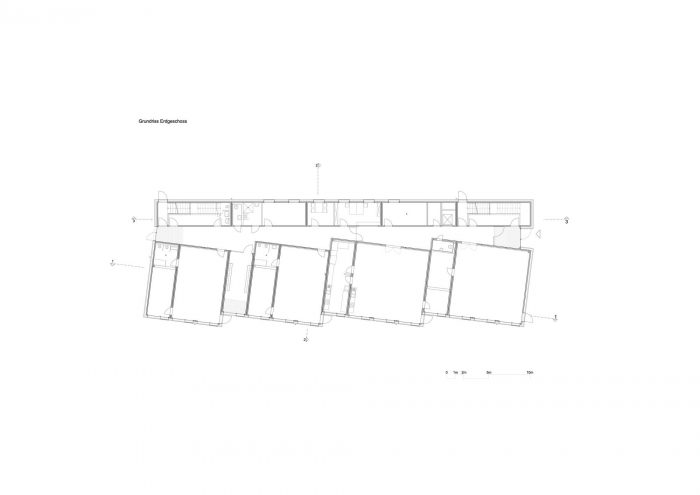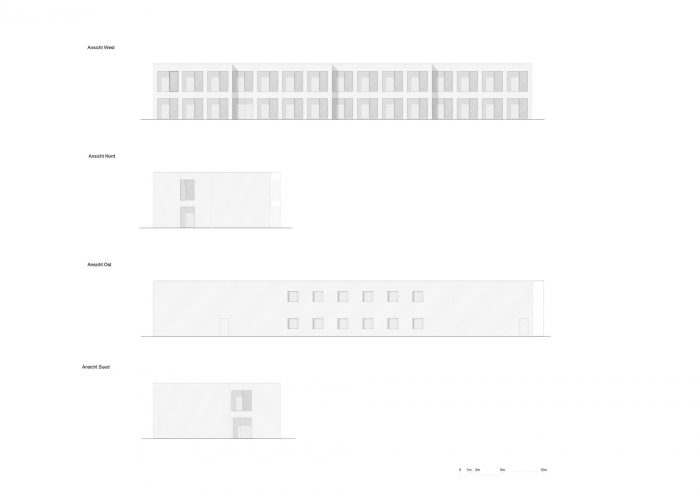萨尔布吕肯的幼儿园规划的特别之处在于它是一个为儿童而建的建筑。这听起来很简单,但这样的任务总是充满挑战,因为在规划和建设期间,你无法与实际使用者协调。所以,这就意味着在设计房间时,要再次站在孩子的角度,从他们的角度出发。这是非常令人兴奋的,因为孩子们自然不会在DIN标准、行政法规等方面浪费心思,而作为建筑师的我们则需要不让这些想法出现在眼前。因此,我们的目标是创造一个让每个人都能感受到欢迎的地方。
The special thing about the planning for the kindergarten in Saarbruecken was that it is a building for children. That sounds simple, but such a task is always a challenge because you can’t coordinate with the actual users during the planning and construction period. So it means putting yourself in the shoes of a child again and taking on their perspective when designing the rooms. This is very exciting, because children naturally do not waste any thought on DIN standards, administrative regulations, and the like, and we as architects are required not to let these thoughts come to the fore. Our goal was therefore to create a place where everyone can feel welcome.
在这里,人们可以尽情欢笑、歌唱和梦想。而这一切没有强迫,而是出于自由的自决。幼儿园所处的城市环境也很特殊:这是一个典型的战后居住区,绿地上有大型公寓楼,建于20世纪60年代,此后出现了各种结构性和社会性问题。将一所新的幼儿园融入这个居住区,对居住在这里的人们来说,是一个正确的、好的信号。
A place that allows space for a wide variety of experiences, where people can laugh, sing and dream. And all this without coercion, but out of free self-determination. The kindergarten is also located in a special urban context: a classic post-war settlement with large apartment blocks on a greenfield site, built in the 1960s, with all the structural and social problems that have arisen since then. Integrating a new kindergarten into this settlement is a right and good sign for the people living there.
然而,新建筑必须融入现有的结构,而不能与之相悖。它必须为未来树立一个标志,同时又要有足够的力量与周围环境互动。因此,我们特意为幼儿园选择了新的、天然的材料,开放和封闭的外墙,以及位于居住区边缘的位置,向自然过渡。
However, the new building must integrate into the existing structure without working against it. It must set a sign for the future and at the same time be strong enough to interact with its surroundings. Hence our deliberate choice of new, natural materials for the kindergarten, the play of open and closed facades, and the positioning at the edge of the settlement in transition to nature.
建筑的规划和实施是木质模块结构。在混凝土土板上,只使用了木材作为结构和设计材料。这在内部空间和外部外观上都体现了建筑的特点。也许特别值得一提的是,尽管模块很严格,但平面图却偏离了正交的网格。通过微微旋转和偏移模块,小组房间的形状变得清晰可辨,并以俏皮优雅的方式向外部空间开放。
The building is planned and implemented as a wooden modular construction. On a concrete soil slab, only wood has been used as the structural and design material. This characterizes the atmosphere of the building both in the interior spaces and in the external appearance. It is perhaps particularly noteworthy that despite the strictness of the modules, the floor plan departs from the orthogonal grid. By slightly rotating and offsetting the modules, the group rooms become legible in shape and open up to the outside space with playful elegance.
建筑师:NKBAK
面积 : 1330 m²
年份:2020年
摄影:Thomas Mayer
制造商:Forbo Flooring Systems, Heradesign, Kaufmann Bausysteme, Villeroy & Boch, Zehnder
设计图纸 : Shanjun Yu
结构:merz kley partner GmbH
暖通空调:Ecotec GmbH
消防工程:Wagner Zeitter Bauingenieure
总承包商:Kaufmann Bausysteme GmbH
城市 : 萨尔布吕肯
国家:德国
Architects: NKBAK
Area: 1330 m²
Year: 2020
Photographs: Thomas Mayer
Manufacturers: Forbo Flooring Systems, Heradesign, Kaufmann Bausysteme, Villeroy & Boch, Zehnder
Design Drawings:Shanjun Yu
Structure:merz kley partner GmbH
HVAC:Ecotec GmbH
Fire Engineering:Wagner Zeitter Bauingenieure
General Contractor:Kaufmann Bausysteme GmbH
City:Saarbruecken
Country:Germany

